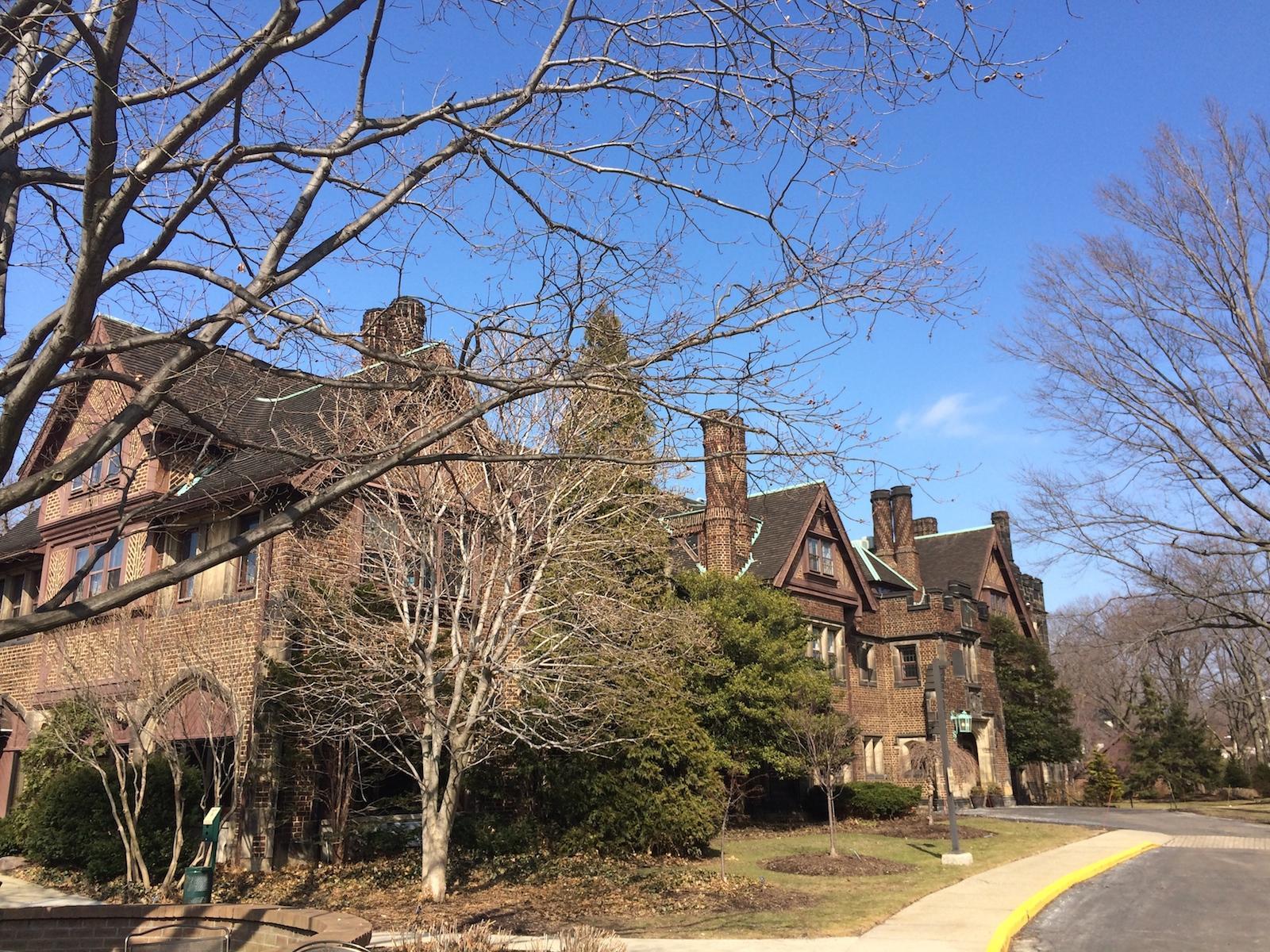Over the past year, the Center collaborated with the the Maxine Goodman Levin College of Urban Affairs at Cleveland State University on the Judson Oral History Project. Funded by the Unger Family Foundation, the project conducted 36 interviews with residents at Judson Park, a not-for-profit retirement community in Cleveland Heights. John Horan, who has since earned his M.A. in History (Museum Studies) from CSU, played a key role in the project as both an interviewer and a facilitator for Judson and Levin staff interviewers. The full digital sound files and minute-by-minute content logs of all 36 interviews are available online in the Cleveland Regional Oral History Collection.
The residents of Judson Park provided varied insights into the history of Greater Cleveland, especially over the last 50 to 60 years. Of the various people interviewed as part of this project, an overarching theme surfaced: diversity. Cleveland, known for its diversity from racial and cultural, to architectural and religious, is represented in the stories captured in the Judson Oral History Project. Interviewees’ backgrounds were as diverse as the subject matter they covered. Each provided a unique lens to see how Cleveland progressed.
Several of the interviewees were immigrants. These interviewees came from Germany, Hungary, and Croatia and represented the changing population of Cleveland over the course of many decades. These interviewees all had a similar observation: they felt that they did not have the cultural baggage that the residents of Cleveland had, freeing them from the thinking and behavior that was pervasive in Cleveland, and other parts of the United States at the time, especially around issues of race. This perspective was exemplified in an interview with Ursula Korniechouk, a German immigrant. She described how she drove through Hough in 1966 with a police escort to take her African American friend home, but lacked the appreciation and fear of what she was undertaking and that entering Hough during the riots might be putting her personal safety at risk. Another story Korniechouk shared included her going door-to-door registering people to vote for the mayoral campaign to elect Carl Stokes in 1967. She did her rounds in Hough and Glenville, and she did them alone. She did not think anything of these instances because she did not realize how deeply ingrained racism was in this country.
During the 1960s and beyond, Cleveland was a hotbed of racial unrest and civil rights activism. Native Clevelanders and those who immigrated to Cleveland dealt with issues of integration and racial division. Interviews with Amy (Mimi) Isaacs, Sonja F. Unger, Kenneth H. Cooley, and Robert H. Arnold among others illustrate the various ways that people were involved with combating racism in Cleveland and the Greater Cleveland Area. For example, Robert Arnold, ex-mayor of Cleveland Heights, was a realtor prior to his political career. As a realtor, he discusses his policies that he enacted to promote fair housing in Cleveland Heights. Another example of fair housing came through the interview with Mimi Isaacs, a founding member of the League of Women Voters who was instrumental during the beginnings of the Ludlow Community Association. These two examples are a sample of the integration stories that surfaced over the course of the interviews at Judson.
Active, influential women were well represented in these interviews. Some held jobs in traditional fields such as education, while others were active in the political space in the community and what would now be called the social justice arena. Interviewee Sara Caruloff expanded her Lorain, Ohio, business from revenues of $3000 to revenues of about $500,000 over the twenty-six years she owned the business. Helen M. Moise, a columnist, rose through the ranks at the Cleveland Press and then the Plain Dealer. She worked on bringing major authors for her speaker-and-books series through the papers. She was also an influential society writer who rubbed elbows with the elite of Cleveland. Sonja Unger belonged to a group of politically active women from Shaker Heights who successfully fended off efforts to demolish the Shaker Lakes and turn what is now cherished natural space into a highway interchange.
Several architects were included over the course of interviewing, and they proved to be a descriptive segment of the interviewees, representing the literal building of the city and its surrounding communities. Jack A. Bialosky, for instance, was the architect of Suburban Temple, the May Company building (that has since been torn down) in University Heights, and chiefly the Bond Court Hotel in downtown Cleveland. He describes building each of these in detail with wonderful stories about the construction of these buildings. His description of the construction of the Bond Court Hotel includes a fire, explosions, and a lawsuit. Meanwhile, another architect, William H. Collins, describes various programs he worked on in Cleveland, the most notable of which included the W.O. Walker Building, now part of the Cleveland Clinic.
A diverse group of people was interviewed as part of this project, but instead of providing disparate anecdotes, this project has provided interesting stories that quilted together, provide an interesting cross-section of Cleveland covering a span of 80 years. Watch for highlights from the Judson project on Cleveland Voices in the coming months.
Update, February 22, 2015: John Horan is now a graduate student in the Ph.D. program in public history at Arizona State University.

